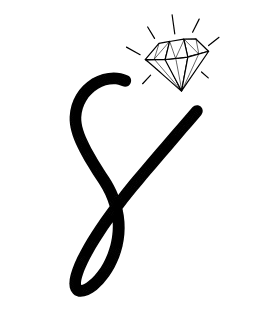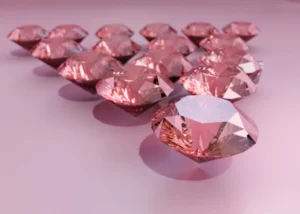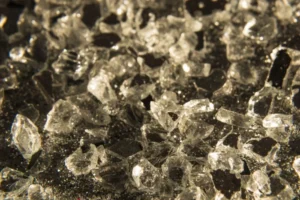Have you ever looked down at a dazzling diamond ring and wondered where it came from? Not just the store, or even the country—but the mine, the workers, the journey. That small sparkle on a finger might carry a story far beyond romance. For me, this question hit home when I began shopping for an engagement ring for my partner. As someone who values transparency and sustainability, I didn’t just want a beautiful stone. I wanted one I could wear with a clear conscience.
That question led me down a rabbit hole of research, interviews with jewellers, conversations with ethical sourcing advocates, and more hours than I’d like to admit poring over diamond certifications. What I discovered is this: not all diamonds are created equal, and identifying an ethically sourced one takes more than just trusting the label.
Let’s explore how you can confidently identify an ethically sourced diamond without getting swept up in misleading marketing.
What Does “Ethically Sourced” Really Mean?
Ethically sourced diamonds are mined, processed, and sold in ways that do not exploit people or the environment. This means no child labour, no forced labour, and ideally, minimal environmental impact. In real terms, it means fair wages for miners, safe working conditions, and transparent supply chains.
But here’s the kicker: the term “ethical” isn’t regulated. Different retailers define it differently. That’s why knowing what to look for matters.
Red Flags: What Makes a Diamond Unethical?
Before diving into what to look for, it helps to understand what to avoid. Here are some classic red flags:
- Conflict Zones: Diamonds that come from war-torn regions and fund armed conflict (commonly called “blood diamonds”).
- Opaque Supply Chains: If a jeweller can’t tell you exactly where the diamond came from, that’s a concern.
- Lack of Third-Party Certification: No verifiable proof? No deal.
According to a 2020 report by Human Rights Watch, many major jewellery brands still fall short in supply chain transparency and human rights protections.
Step-by-Step: How to Identify an Ethically Sourced Diamond
1. Check for Reliable Certifications
The best way to start is by looking at reputable certifications. These aren’t just diamond quality certificates (like GIA reports), but sourcing credentials:
- The Kimberley Process Certification Scheme (KPCS): A starting point, but flawed. It only bans diamonds that fund rebel violence, not those tied to human rights abuses by governments or companies.
- CanadaMark: Tracks diamonds from Canadian mines known for high environmental and ethical standards.
- SCS-007 Certification: A newer standard ensuring climate neutrality and social responsibility across the diamond’s lifecycle.
- Fairtrade and Fairmined: Rare for diamonds, but highly reputable when available.
“The Kimberley Process has limitations. For truly ethical sourcing, you need more than just that stamp,” says Lisa Bridge, President and CEO of Ben Bridge Jeweler.
2. Ask the Jeweller Directly
Don’t be shy. Ask:
- Where was this diamond mined?
- How was it sourced?
- Are all workers involved in the supply chain paid fair wages?
Ethical jewellers will welcome your questions. When I visited a boutique in London specialising in ethical jewellery, the salesperson walked me through their diamond’s full journey—from a Canadian mine to their own eco-friendly studio.
3. Consider Lab-Grown Diamonds
Lab-grown diamonds have surged in popularity, and for good reason. They’re chemically identical to natural diamonds and don’t require mining. While not entirely free of environmental impact (labs consume energy), their human rights record is much cleaner.
Brands like Brilliant Earth and Vrai have built their reputations around high-quality lab-grown options with transparent sourcing.
In 2022, global lab-grown diamond production reached 9 million carats, a 40% rise from the previous year.
4. Look Into the Brand’s Practices
Ethical sourcing isn’t just about one diamond—it’s about a company’s entire approach.
Check the brand’s:
- Transparency reports
- Human rights statements
- Environmental commitments
Brands like Bario Neal, Valerie Madison, and Ingle & Rhode are known for their rigorous ethical sourcing policies.
5. Verify Traceability
Some jewellers offer digital blockchain tracking or provenance certificates. These follow a diamond’s journey from mine to market.
For example, Everledger is a blockchain-based platform that traces the entire lifecycle of a diamond, providing data that consumers can trust.
Ethical Alternatives: Beyond Traditional Mining
If you want to go beyond conventionally mined stones, here are alternatives:
– Recycled Diamonds:
Old diamonds repurposed into new jewellery. No new mining involved, and they often come with vintage charm.
– Moissanite & Other Gemstones:
Visually similar to diamonds but with entirely different sourcing requirements.
These alternatives often cost less and have a lighter footprint, ethically and environmentally.
My Experience: From Overwhelmed to Empowered
When I started my search, I felt like I was drowning in marketing buzzwords. Every brand claimed to be “ethical.” It wasn’t until I stumbled upon a local jeweller who specialised in Canadian-sourced diamonds that I saw the difference. They showed me every step of the diamond’s journey and even introduced me to the cutter via Zoom. That connection, that transparency—that’s what made the diamond feel special.
I walked away not just with a ring, but with a story I’m proud to tell.
FAQs About Ethically Sourced Diamonds
What is the Kimberley Process?
An international certification scheme to prevent conflict diamonds from entering the market. It has limitations but is still a basic standard.
Are lab-grown diamonds really ethical?
Yes, especially when produced using renewable energy. They eliminate many of the human rights issues associated with mining.
Is a recycled diamond a good alternative?
Absolutely. It requires no new mining and is often more affordable.
How do I know if a jeweller is being honest?
Look for detailed sourcing information, third-party certifications, and transparent business practices.
Can I get an ethically sourced diamond on a budget?
Yes. Lab-grown and recycled diamonds are typically more affordable and still stunning.
Final Thoughts & Takeaway
Finding an ethically sourced diamond isn’t just a shopping decision—it’s a value statement. By choosing diamonds with transparent origins, fair labour practices, and minimal environmental impact, you turn a symbol of love into one of integrity.
So next time you walk into a jewellery store or browse online, ask the hard questions. Demand transparency. Your diamond should shine with pride, not just polish.
Have you gone through the process of buying an ethical diamond? I’d love to hear about your experience—what you learned, what surprised you, and what you’d do differently. Let’s make the diamond industry better, one sparkle at a time.
Learn also about the diamond certifications for safety.
If you want to get more such information make sure to visit our website.



